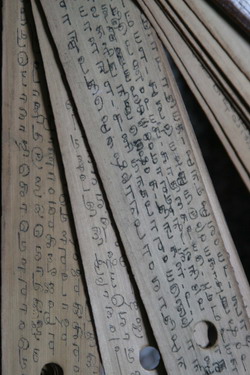
 |
 |
Mayan and Vaastu
Maamuni Mayan was the progenitor of Vaastu teachings.
“He is none other than the Divine architect, scientist, technical wizard, poet and traditional builder, by name Maamuni Mayan” wrote Dr. V. Ganapati Sthapati.
Maamuni Mayan was born on February 5th more than 10,000 years ago.
Mayan’s name was “found in Indian epics of Ramayana, Mahabharata, the Tamil epic of Silappathikaram, Manimrkalai, Jeevaka Chintamani,” etc. |

Maamuni Mayan carved at Dr. Sthapati’s stone yard for Mayan Memorial. Photograph by Dr. V. Ganapati Sthapati’s office. |
Dr. Sthapati refers to Prof. R. R. Karnik’s paper, Author of Ancient Sciences listing Maamuni Mayan’s works such as
- Vaastu Shastra
- Jyotirganita-Surya Siddhanta
- Aintiram
- High sea navigation and cartography
- Fundamental physics
- The Brahma principle
Dr. V. Ganapati Sthapati rediscovered and reinterpreted palm leaf manuscripts received from the Indian Government in 1980 th. They are written in ancient technical Tamil language and taught by Brahmarishi Mayan, ancient builder, architect and scientist. Book “Building Architecture of Sthapatya Veda” was the result of Dr. Sthapati’s work. He was able to understand the technical and scientific core of the teachings because of his technical and architectural background. There are several different works attributed to Brahmarishi Mayan, who established Vaastu Shastra . The Yogashastra |

Original Palm Leaf of Vaastu Shastra. Photograph by Henk Sterenberg, Val Morin, Canada of 2007. |
Mayan is also an author of Aindiram. According to Dr. S. Padmanabhan, well known Indian linguist, Aindiram is a part of the same Vaastu teachings. “Aindiram is multidimensional treatise on Energy and Matter, Space and Time, Order and Beauty. Absolute time creates life said Mayan in his Aindiram.”
So, Vaastu is a science based on several ancient works 10,000 to 15,600 years old and can be viewed as philosophy or psychology of Green building construction.
|
 |
 |